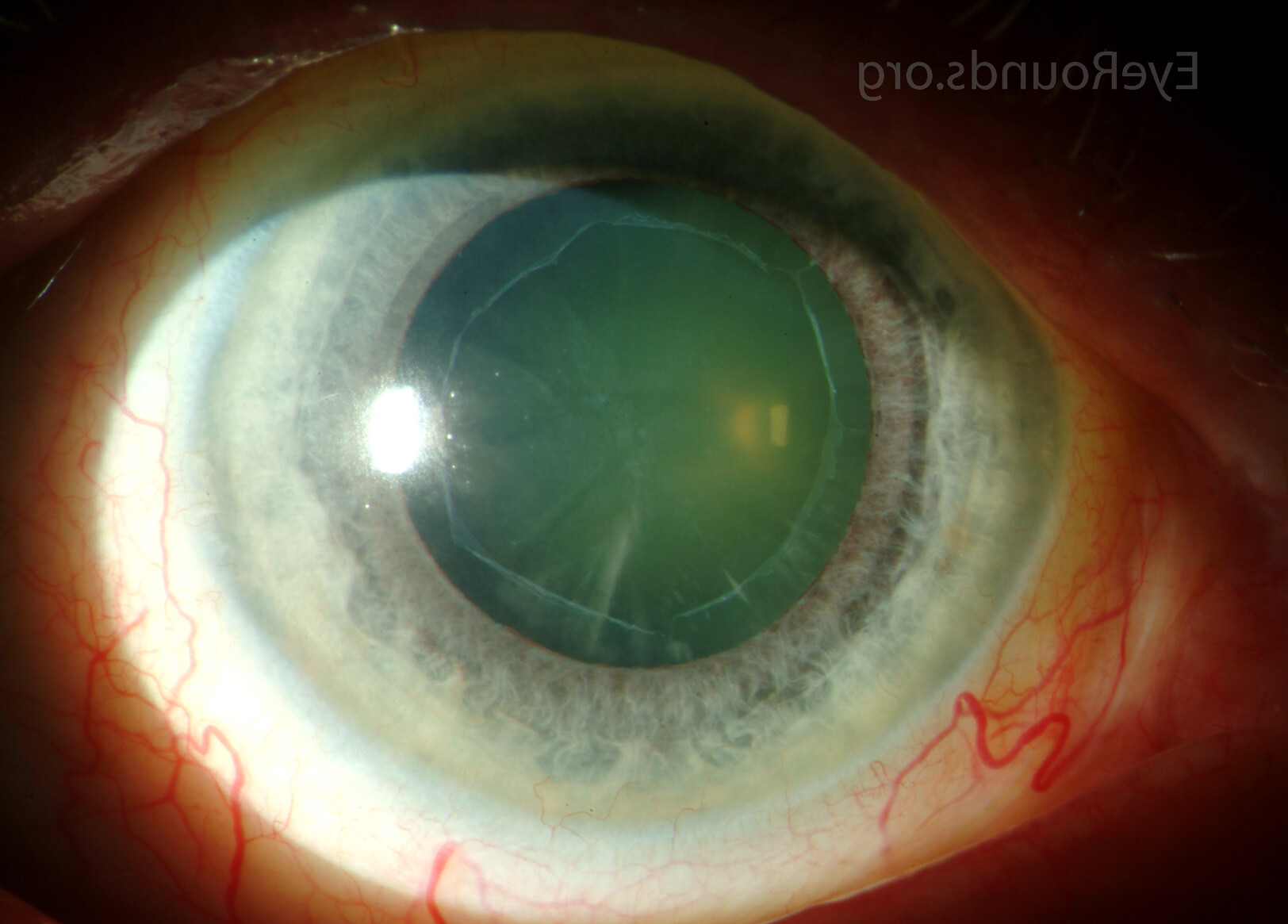
Pseudoexfoliation Syndrome (PXF) is a sneaky eye condition that often goes unnoticed until it causes trouble. Affecting millions worldwide, it involves the buildup of flaky, dandruff-like material in the eye. This debris can clog the eye's drainage system, leading to increased pressure and potentially causing glaucoma. People over 60 are more likely to develop PXF, but it can strike anyone. Symptoms might include blurry vision, eye pain, or even no symptoms at all. Regular eye exams are crucial for early detection. Understanding PXF can help manage its impact and protect your vision. Ready to learn more? Let's dive into 40 intriguing facts about PXF!
Key Takeaways:
- Pseudoexfoliation Syndrome (PXF) is a serious eye condition that can lead to glaucoma and cataracts, often mistaken for normal aging changes. Early diagnosis and regular eye exams are crucial for managing PXF effectively.
- Understanding the causes, risk factors, and treatment options for PXF can help protect eye health. Research is ongoing to develop more effective treatments and improve the prognosis for patients with PXF.
What is Pseudoexfoliation Syndrome?
Pseudoexfoliation Syndrome (PXF) is an eye condition characterized by the accumulation of microscopic, dandruff-like material on the lens and other structures within the eye. This syndrome can lead to serious eye problems, including glaucoma and cataracts. Here are some intriguing facts about PXF.
-
PXF is often mistaken for normal aging changes in the eye, making it tricky to diagnose early.
-
The syndrome is more common in people over the age of 60.
-
PXF can affect one or both eyes, but it usually starts in one eye first.
-
The condition is more prevalent in certain ethnic groups, including those of Scandinavian descent.
-
PXF is a leading cause of secondary open-angle glaucoma worldwide.
Symptoms and Diagnosis
Recognizing the symptoms and understanding how PXF is diagnosed can help in managing the condition effectively.
-
Symptoms of PXF may include blurred vision, eye pain, and sensitivity to light.
-
An eye exam using a slit lamp microscope can reveal the characteristic flaky material associated with PXF.
-
Intraocular pressure (IOP) measurements are crucial since PXF can lead to elevated IOP.
-
Gonioscopy, a test to examine the drainage angle of the eye, is often used to assess the risk of glaucoma in PXF patients.
-
Optical coherence tomography (OCT) can help in evaluating the optic nerve and retinal nerve fiber layer for damage.
Causes and Risk Factors
Understanding what causes PXF and the risk factors involved can provide insights into prevention and management.
-
The exact cause of PXF is unknown, but it is believed to involve genetic and environmental factors.
-
Mutations in the LOXL1 gene have been linked to an increased risk of developing PXF.
-
Ultraviolet (UV) light exposure may contribute to the development of PXF.
-
PXF is more common in women than men.
-
Family history of PXF increases the likelihood of developing the condition.
Treatment Options
While there is no cure for PXF, various treatments can help manage its symptoms and complications.
-
Eye drops that lower intraocular pressure are often prescribed to manage glaucoma associated with PXF.
-
Laser trabeculoplasty can be effective in reducing intraocular pressure in PXF patients.
-
Surgical options, such as trabeculectomy or glaucoma drainage implants, may be necessary for advanced cases.
-
Cataract surgery can be more challenging in PXF patients due to the fragile nature of the lens capsule.
-
Regular monitoring and follow-up with an eye care professional are essential for managing PXF.
Complications and Prognosis
PXF can lead to several complications, and understanding the prognosis is crucial for patients and caregivers.
-
PXF increases the risk of developing cataracts, which can impair vision.
-
Glaucoma caused by PXF can lead to irreversible vision loss if not treated promptly.
-
PXF can cause zonular weakness, making the lens more prone to dislocation during cataract surgery.
-
Patients with PXF are at higher risk of developing retinal vein occlusion.
-
Early detection and treatment of PXF-related complications can improve the prognosis.
Research and Future Directions
Ongoing research aims to better understand PXF and develop more effective treatments.
-
Studies are exploring the role of oxidative stress in the development of PXF.
-
Researchers are investigating potential biomarkers for early detection of PXF.
-
Gene therapy is being studied as a possible future treatment for PXF.
-
Clinical trials are testing new medications to lower intraocular pressure in PXF patients.
-
Advances in imaging technology are improving the ability to diagnose and monitor PXF.
Living with Pseudoexfoliation Syndrome
Managing daily life with PXF involves understanding the condition and taking proactive steps to protect eye health.
-
Wearing sunglasses that block UV light can help reduce the risk of PXF progression.
-
Maintaining a healthy lifestyle, including a balanced diet and regular exercise, can support overall eye health.
-
Patients with PXF should avoid activities that increase intraocular pressure, such as heavy lifting or straining.
-
Regular eye exams are crucial for early detection and management of PXF-related complications.
-
Joining a support group can provide emotional support and valuable information for PXF patients.
Interesting Facts and Trivia
Here are some lesser-known facts and trivia about PXF that might surprise you.
-
PXF was first described in 1917 by Finnish ophthalmologist John G. Lindberg.
-
The flaky material in PXF is composed of proteins and glycosaminoglycans.
-
PXF can sometimes be mistaken for other eye conditions, such as pigment dispersion syndrome.
-
The prevalence of PXF varies widely between different geographic regions and populations.
-
Despite its name, PXF is not related to true exfoliation, which involves the peeling of the lens capsule.
Final Thoughts on Pseudoexfoliation Syndrome
Pseudoexfoliation Syndrome (PXF) is a complex eye condition that affects many people worldwide. Understanding its symptoms, causes, and treatment options can help manage the condition better. Regular eye exams are crucial for early detection and effective management. While PXF can lead to serious complications like glaucoma and cataracts, advancements in medical research offer hope for improved treatments and outcomes.
Living with PXF requires a proactive approach to eye health. Staying informed, following prescribed treatments, and maintaining regular check-ups with an eye specialist can make a significant difference. Remember, early intervention is key to preserving vision and quality of life. If you or a loved one shows signs of PXF, consult an eye care professional promptly. Knowledge and timely action can help manage this condition effectively.
Frequently Asked Questions
Was this page helpful?
Our commitment to delivering trustworthy and engaging content is at the heart of what we do. Each fact on our site is contributed by real users like you, bringing a wealth of diverse insights and information. To ensure the highest standards of accuracy and reliability, our dedicated editors meticulously review each submission. This process guarantees that the facts we share are not only fascinating but also credible. Trust in our commitment to quality and authenticity as you explore and learn with us.


